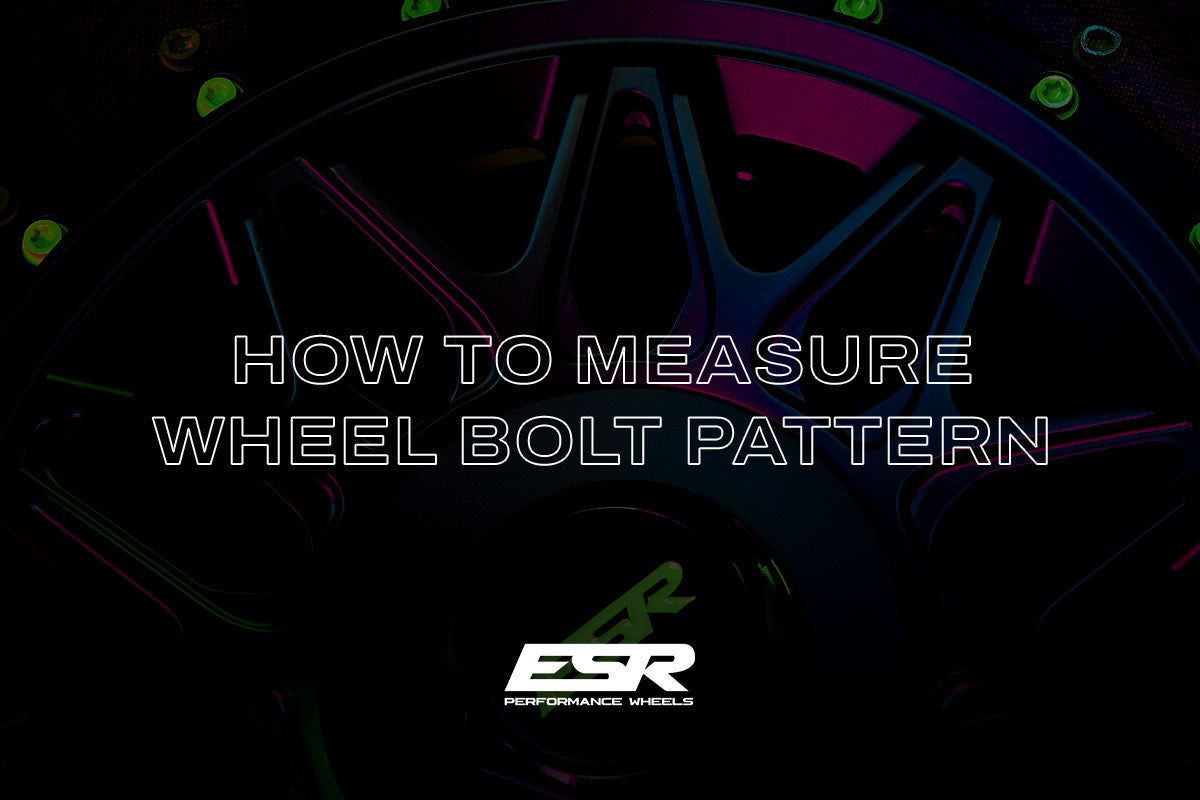
How To Measure Wheel Bolt Pattern
Choosing the right wheels for your vehicle involves more than just aesthetics—it's about ensuring compatibility and safety. One of the fundamental aspects of wheel fitment is understanding the wheel bolt pattern. This specification, often expressed in numbers like "5x114.3" or "6x139.7," dictates how the wheel bolts or lugs align with the hub. Getting the bolt pattern right ensures that your wheels fit snugly and securely on your vehicle, preventing issues like vibration or improper alignment. In this guide, we'll walk you through everything you need to know about measuring wheel bolt patterns accurately, allowing you to make a more informed decisions when upgrading your vehicle's wheels.
Understanding Bolt Patterns: The Basics
The bolt pattern of a wheel refers to the arrangement of the lug holes that align with the vehicle's hub. This specification is crucial because it determines whether a wheel can be mounted on a particular vehicle. Bolt patterns are typically described using two numbers: the first number indicates the quantity of bolts or lugs, while the second denotes the diameter of the circle they form when measured from the center of one lug hole to the center of the opposite hole (in millimeters). Common bolt patterns include 4-lug, 5-lug, and 6-lug configurations, each tailored to specific vehicle makes and models. Understanding these basics is essential for selecting wheels that fit perfectly and securely on your vehicle's hub.
Tools You'll Need
Measuring your vehicle's wheel bolt pattern requires a few essential tools to ensure accuracy. Here's what you'll need:
- Measuring Tape: A flexible measuring tape is crucial for determining the diameter of the bolt circle accurately.
- Straight Edge: Use a straight edge, such as a ruler or carpenter's square, to measure the distance between lug holes across the wheel.
- Marker or Pen: Marking the lug holes you measure can help keep track of where you've measured.
- Calculator: If needed, a calculator can assist in determining the diameter of the bolt circle once measurements are taken.
Having these tools on hand will simplify the process of measuring your wheel bolt pattern, ensuring that you select the correct wheels for your vehicle.
Identifying the Number of Bolt Holes
Before measuring your vehicle's wheel bolt pattern, the first step is to accurately count the number of bolt holes on the wheel. This number is crucial as it determines the initial part of your bolt pattern specification (e.g., "5x114.3"). To count the bolt holes, simply visually inspect the wheel, looking for the openings where the bolts or lug nuts attach. Most wheels will have 4, 5, 6, or 8 bolt holes, depending on the vehicle's make and model. Ensuring an accurate count sets the foundation for correctly measuring the bolt circle diameter and ensuring compatibility when selecting new wheels for your vehicle.
Measuring the Bolt Circle Diameter (BCD)
Once you've identified the number of bolt holes on your wheel, the next step is to measure the Bolt Circle Diameter (BCD). This measurement determines the diameter of the circle formed by the centers of the bolt holes. Here's how you can measure the BCD:
- Select Bolt Holes: Choose any bolt hole as a starting point. Measure from the center of this hole to the center of the hole directly across from it.
- Measure Across: Use a measuring tape or caliper to accurately measure this distance. Ensure you measure directly across the center of the wheel, not along the circumference.
- Calculate Diameter: If you have a 5-lug wheel, for example, measure the distance between the centers of two directly opposite holes and multiply by 1.05 to calculate the BCD.
Accurate measurement of the BCD is crucial for determining which wheels will fit your vehicle's hub correctly.
Step-by-Step Guide to Measuring Bolt Patterns
Measuring your vehicle's bolt pattern ensures that new wheels will fit perfectly and securely. Here’s a step-by-step guide to accurately measure bolt patterns:
- Identify Bolt Holes: Count the number of bolt holes on your wheel. Common configurations include 4-lug, 5-lug, and 6-lug patterns.
- Choose Starting Point: Select any bolt hole as your starting point for measurement.
- Measure Bolt Circle Diameter (BCD):
- Measure from the center of the starting bolt hole to the center of the hole directly across from it.
- Use a measuring tape or caliper to ensure precise measurement.
- Calculate BCD: Multiply the measured distance by 1.05 for a 5-lug pattern, 1.08 for a 6-lug pattern, etc., to determine the Bolt Circle Diameter (BCD).
- Verify and Record: Double-check your measurements and record the bolt pattern specification (e.g., "5x114.3").
Following these steps will enable you to accurately determine your vehicle's bolt pattern, facilitating the selection of compatible wheels for optimal fitment and performance.
Common Bolt Patterns and Their Applications
Understanding common bolt patterns is essential when choosing wheels for your vehicle. Here are some of the most prevalent bolt patterns and their typical applications:
- 4x100: Found on many compact cars and some older model vehicles.
- 5x114.3 (5x4.5): Commonly used on a wide range of vehicles including Honda, Acura, Toyota, Lexus, Ford, and more.
- 5x120: Found on BMW, Chevrolet Camaro, some Cadillac models, and others.
- 6x139.7 (6x5.5): Typically used on trucks and SUVs such as Chevrolet Silverado, GMC Sierra, Toyota Tacoma, and others.
- 8x165.1 (8x6.5): Commonly found on heavy-duty trucks like Ford F-250, F-350, and others.
Knowing these patterns helps ensure you select wheels that fit perfectly and securely on your vehicle's hub, enhancing both performance and aesthetics. Always verify your vehicle's specific bolt pattern before purchasing new wheels to ensure compatibility.
Tips for Accurate Measurement
When measuring your vehicle's wheel bolt pattern, follow these tips to ensure precision and accuracy:
- Use a Measuring Tool: Use a caliper or a measuring tape with millimeter markings for precise measurements.
- Center-to-Center: Measure from the center of one bolt hole to the center of the opposite hole directly across.
- Triple-Check: Double-check your measurements to avoid errors. Even a slight mistake can lead to selecting the wrong wheels.
- Consult Manufacturer Specs: Refer to your vehicle's manual or contact the manufacturer for exact bolt pattern specifications.
- Test Fit: If possible, test fit the wheels before final installation to confirm compatibility and alignment.
- Seek Professional Help: If unsure, consult with a professional or an automotive expert to ensure accurate measurement and fitment.
By following these tips, you can confidently measure your vehicle's wheel bolt pattern and select wheels that fit perfectly, ensuring optimal performance and safety on the road.
Conclusion: Ensuring a Perfect Fit
Accurately measuring your vehicle's wheel bolt pattern is essential for selecting wheels that fit perfectly and enhance both the performance and appearance of your vehicle. By understanding the basics of bolt patterns, using precise measuring tools, and double-checking your measurements, you can avoid common pitfalls and ensure compatibility. Whether upgrading for style or functionality, taking the time to measure correctly ensures a seamless fit that enhances your driving experience.
Ready to upgrade your wheels? Explore ESR Wheels today for a premium selection of high-quality aftermarket wheels. With ESR Wheels, you can find the perfect fit that combines style and performance, ensuring your vehicle stands out on any road. Don't settle for less—choose ESR Wheels for a transformation that enhances both aesthetics and driving dynamics.

